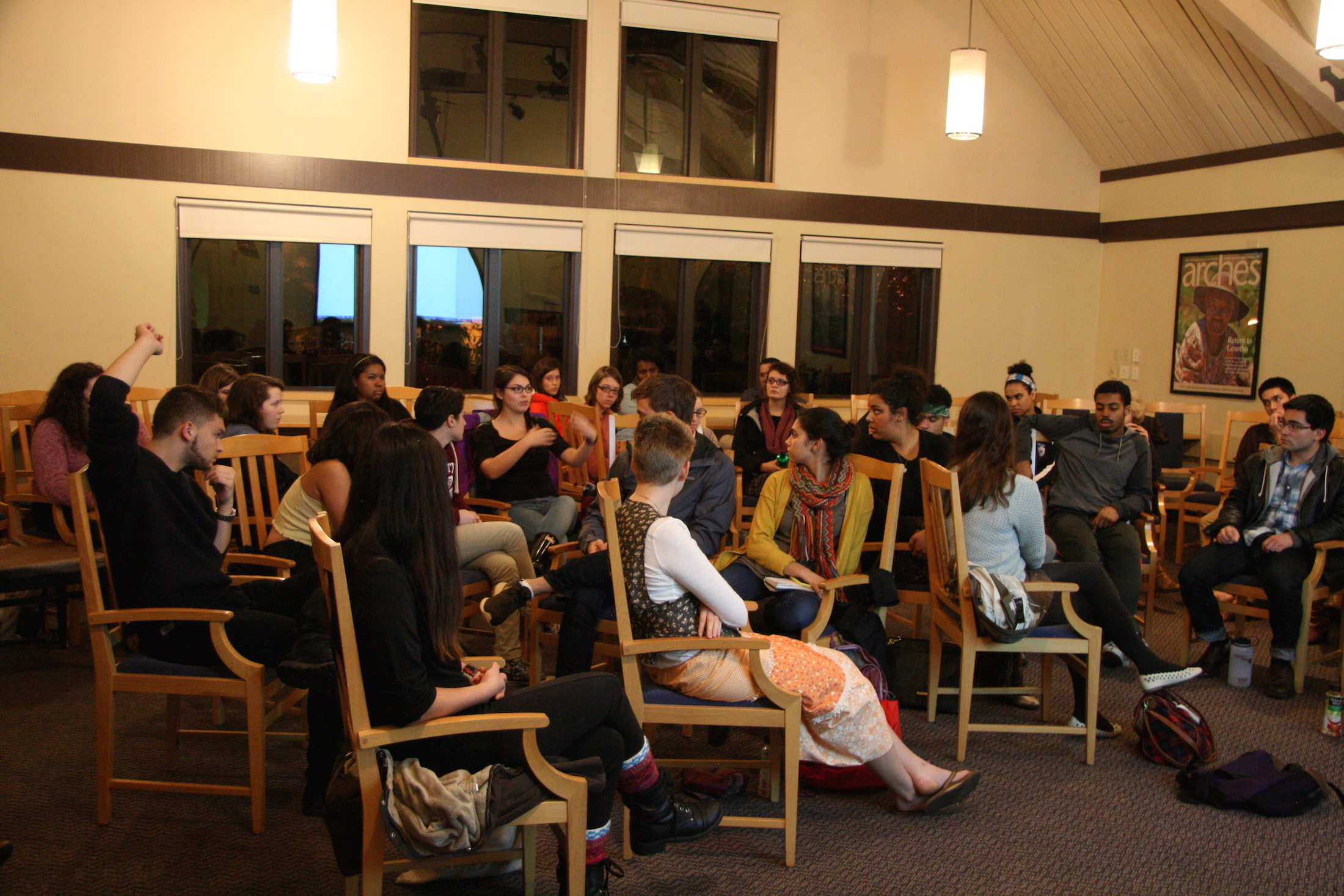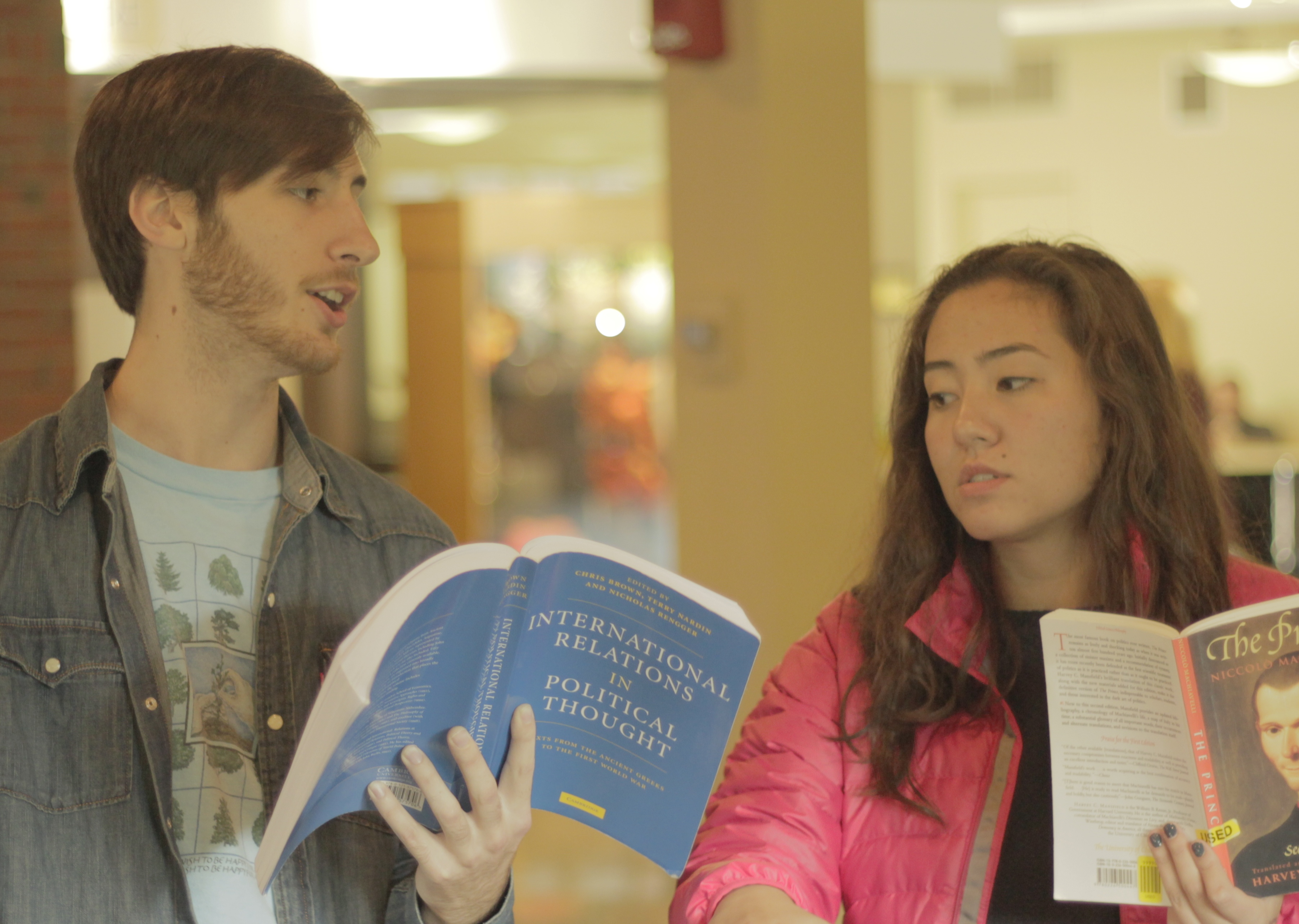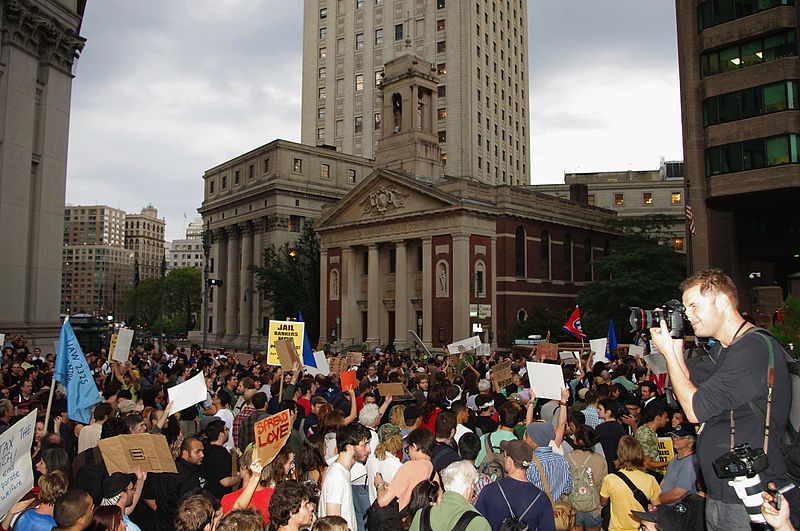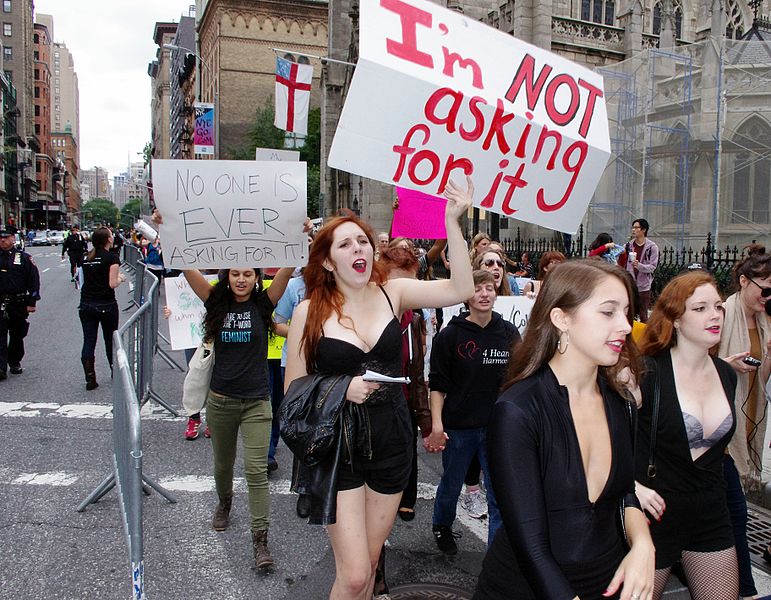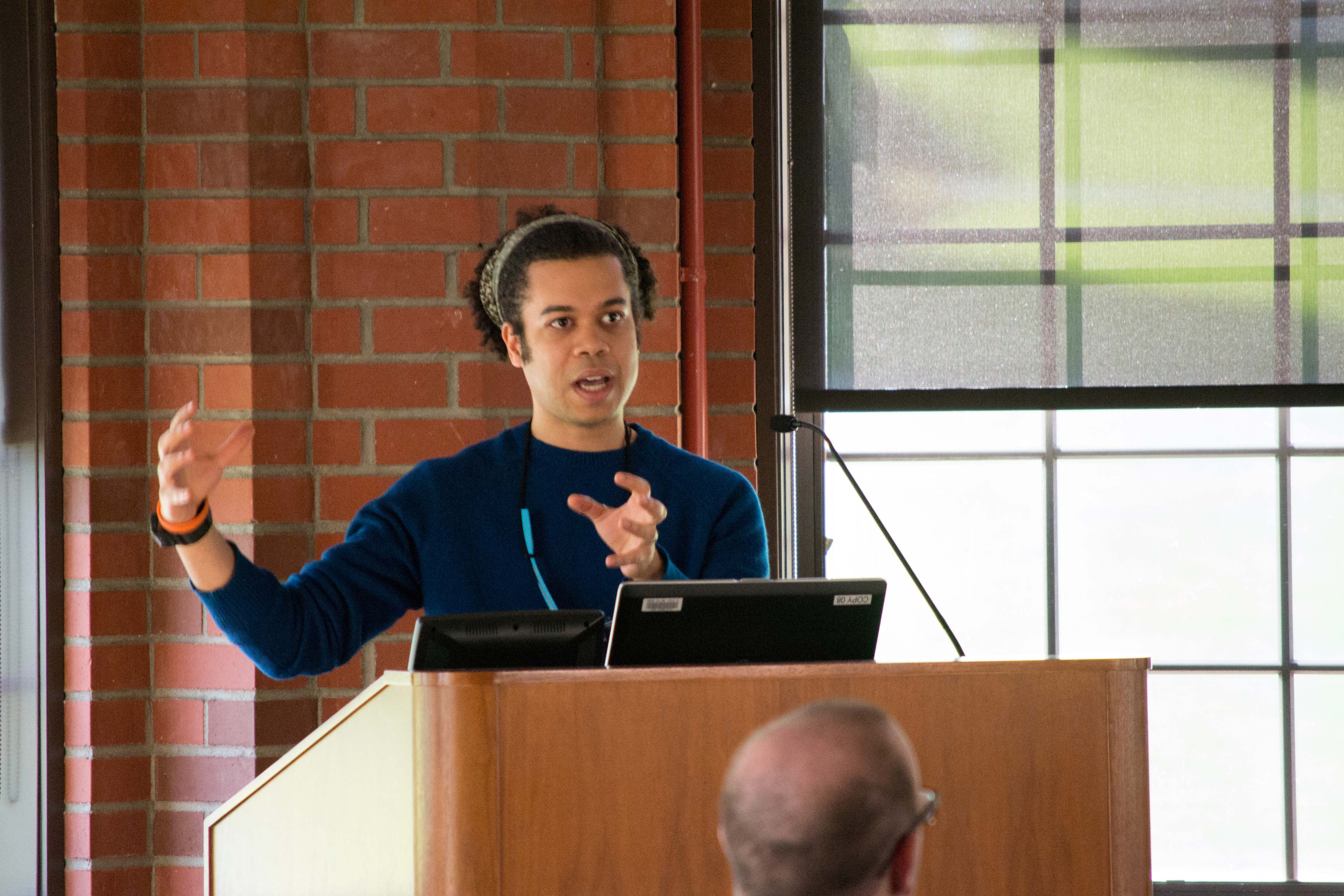
On April 9, Micah White, the former editor of Adbusters magazine, gave a guest lecture called “What is a Protest?” in the Rotunda.
He is also credited with being the only American co-creator, of the 2011 movement “Occupy Wall Street.”
Adbusters magazine defines itself as “a global network of culture jammers and creatives working to change the way information flows, the way corporations wield power and the way meaning is produced in our society.”
After a brief but humorous introduction, a smiling White walked to the front of the room, looking approachable with Google Glass around his neck. He quickly appealed to the crowd with comments such as “I think liberal arts colleges are the future” and “The weather is like, really awesome.”
He then introduced himself and explained that the goal of his lecture, as the title would suggest, was to answer the question “What is a protest?” as it applies to activism today.
A protest, according to White, is “the way people manifest their discomfort with the government.”
He outlined the history of activist tools in promoting wide-scale change, citing Constantine the Great’s use of the cairo symbol in spreading Christianity, roadblocks to protest the World Trade Organization Summit in Seattle in 1999, and Occupy Wall Street’s own use of the hashtag.
These historical movements, as well as more modern ones like “Partido Del Futura” in Spain and “Movimento” in Italy, inspired the techniques used in Occupy’s organization and demonstrations.
White claimed that Occupy is “a manifestation of protests from the last 500 years.”
But of Occupy, White said, “It’s a constructive failure.” It had “a high level of intelligence,” but it showed White and the other organizers what the limitations are when you are just occupying space. He said that they know now that camping out is not provocative enough to cause change. Protests in the streets are not the way either.
What is the way? White said, “Think viral social rituals.” These rituals include sounds, gestures and colors that one can identify with a particular movement and spread rapidly.
He cited the use of the four-fingered gesture “the RABA” in the Middle East as an anti-coup rallying call to the Islamic world and the reverse Nazi salute in France. He laughed as he said that the government wants to ban the gesture on the basis of being anti-semitic. People insist that it is not anti-semitic, and that no one actually knows what it means, but it has still caught on.
That, he insists, is the power of viral social rituals. No one knows why they are doing what they are doing, but they are doing it.
Time can be an even greater challenge to protests than law enforcement and the government. These protests have to be quick and intense.
“You basically have 28 days for an active protest,” he said. White seemed to be torn on whether social media is an asset or an obstacle to activist movements.
He put on his Google Glass and explained how important the technology could be in transmitting visual images of live active protests to the rest of the world.
But, at the same time, he said, social media has become so pervasive and there is so much content that most of that content has been reduced to white noise.
For more information on Occupy Wall Street and Micah White, you can check out White’s website ActivistBoutique.com.
White is also promoting a movement with friend Justin Wedes that promotes “needs based” activism in struggling cities like Detroit. It is called the After Party and you can find out more about it on AfterpartyUSA.org.


